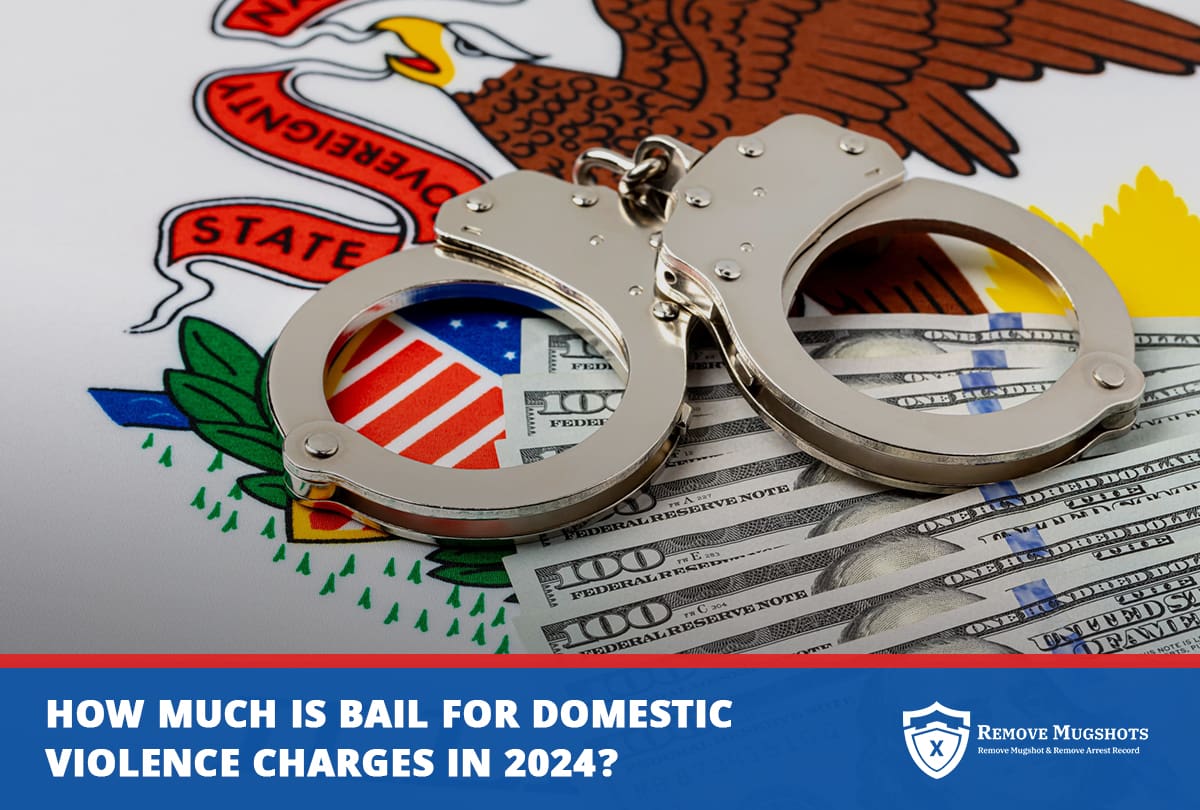How Much Is Bail For Domestic Violence Charges In 2024?
June 5, 2024 Legal Tips

Domestic violence charges have serious legal implications, so understanding the bail process is crucial. This article explores how bail amounts are determined for these charges, the factors that influence these decisions, and the repercussions if bail cannot be posted.
It also discusses methods to lower bail, options such as pretrial release, and steps to take if bail conditions for domestic violence bond are breached. Stay informed to understand bail for domestic violence charges in 2024 fully.
What is Bail for Domestic Violence Charges?
In America, bail for domestic violence charges is a court-set financial arrangement allowing a defendant accused of a domestic violence offense to be released from custody pending their court hearings, contingent upon meeting specific conditions and financial obligations.
Understanding Bail Determination and Process for Domestic Violence Charges
The bail determination for domestic violence charges involves judges assessing various factors to set an appropriate amount within legal limits and to ensure community safety.
Following an arrest, the bail process commences with a court hearing where the judge establishes the bail amount and conditions. Defendants or their families can opt to post bail either in cash or through a bail bondsman, who charges a non-refundable fee based on a percentage of the total bail amount.
This bond guarantees the defendant’s presence in court; failure to comply can result in bail forfeiture and an arrest warrant. Bail bondsmen provide financial support to defendants who cannot cover the full bail independently, facilitating their engagement in the legal proceedings.
Bail Options and Pretrial Release for Domestic Violence Charges
The determination of bail for domestic violence charges involves judges assessing multiple factors, such as the severity of the charge, the other domestic violence case, the defendant’s criminal history, and community safety. This ensures an appropriate amount is set within legal guidelines.
Following the arrest, the bail process commences with a court hearing where the judge sets bail and conditions. Bail can be paid in cash or through a bail bondsman, who charges a non-refundable fee based on a percentage of the total bail. This bond guarantees the defendant’s court appearance; failure leads to bail forfeiture and an arrest warrant.
Bail bondsmen facilitate access to legal proceedings for defendants unable to afford full bail independently.
Defendants seeking release pre-trial due to financial constraints can request a bail hearing to present evidence of hardship and argue for reduced bail. Documentation like pay stubs, bank statements, and character references demonstrating community ties and low flight risk are essential. Judges reconsider bail based on these factors.
Alternatively, the pretrial release offers conditional freedom without bail, with terms like regular check-ins and activity restrictions to uphold community safety and trial preparedness.
What Happens After Bail is Set?
Once bail is set for domestic violence charges, the defendant must follow procedures to secure their release, often by posting bail through a bail bond agent and meeting court-set conditions.
Bail can be paid directly to the court or secured with a bail bond, where an agent posts the full amount for a non-refundable fee, typically 10%.
The defendant and their family ensure court appearances to prevent bond forfeiture. Bail bond agents are crucial in facilitating release from custody pending trial.
Bail conditions may include GPS monitoring, no-contact orders, and mandatory anger management classes.
GPS monitoring tracks movements to enforce restrictions, while no-contact orders prevent communication with victims or related parties.
Anger management aims to address issues and reduce future domestic violence arrests and risks, supporting rehabilitation efforts.
How Much is Bail for Domestic Violence Charges in 2024?
In 2024, the bail amount for domestic violence charges can vary significantly based on the specifics of the case. Still, it reflects adjustments to address inflation, legal reforms, and public safety concerns.
Comparison to Previous Years
In 2024, bail amounts for domestic violence charges increased notably compared to prior years, reflecting a 15% rise since 2020. This trend is influenced by greater recognition of the seriousness of domestic violence, stricter legal penalties, and general economic inflation.
These factors have led courts to set higher bail amounts, aiming to discourage offenders and prioritize the safety and protection of victims.
Factors That May Influence Bail Amount in 2024
Multiple factors influence bail amounts for domestic violence charges in 2024. Legislative updates and economic conditions are crucial; new laws might tighten or loosen domestic violence bail guidelines, while inflation affects bail costs.
Courts also prioritize public safety, setting bail to deter domestic violence and safeguard victims. Experts suggest bail amounts for violent felony crimes are trending higher due to increased societal emphasis on victim safety and concerns over rising domestic violence incidents.
What Happens If You Violate Bail Conditions?
Violating bail conditions in domestic violence cases leads to serious consequences, such as immediate arrest, facing additional charges, and losing the posted bail amount. Courts consider these violations breaches of trust and threats to public safety, prompting actions like immediate arrest warrants.
Such violations of the bail schedule can increase legal penalties, delay case resolution, and create legal complexities. Failing to comply with bail conditions also means forfeiting the bail amount, adding legal and financial challenges for the individual.
How Can You Get Bail Reduced or Eliminated?
Defendants facing domestic violence charges can pursue two main avenues to reduce or eliminate bail: scheduling a bail hearing or utilizing a bail bondsman.
At a bail hearing, defendants present evidence of their financial status and adherence to legal standards to convince the court to lower or waive bail.
Alternatively, working with a bail bondsman requires paying a non-refundable fee, generally 10-15% of the bail sum, for release pending trial, with the bondsman ensuring court attendance.
Preparation for a bail hearing involves compiling records such as employment history and community ties to counter flight risk concerns and affirm commitment to court obligations.



